The 25th Japan Media Arts Festival Award-winning Works Exhibition was held from Friday, September 16 to Monday, September 26, 2022. During this period, related events including talk sessions and workshops took place. On Saturday, September 17, The Fourth Wall (Animation Division Grand Prize winner) and Dozens of Norths (Animation Division Excellence Award winner) were screened at Ikebukuro HUMAX Cinemas, followed by a talk session with Mahboobeh KALAEE, the animation filmmaker who was awarded the Grand Prize for The Fourth Wall, and YAMAMURA Koji, the animation artist who was awarded the Excellence Award for Dozens of Norths, moderated by FUJITSU Ryota, an anime critic and one of the jurors for the Animation Division. This article reports on the event.
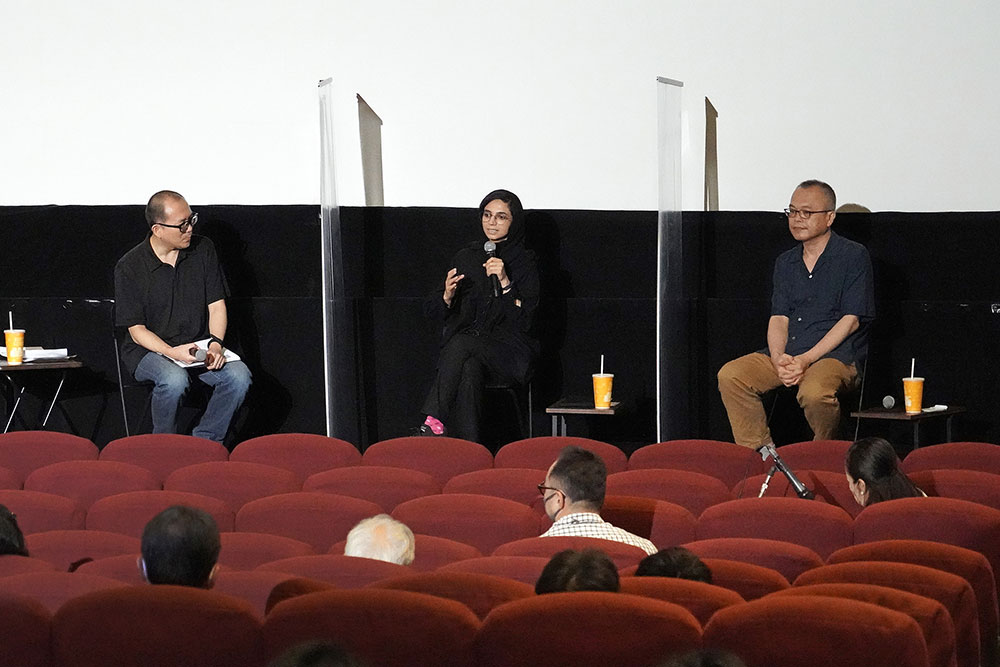
The moderator invited the two award winners to explain how they created their works. YAMAMURA Koji explained his work in the first half of the talk session, then Mahboobeh KALAEE in the second half.
FUJITSU Ryota, who served as one of the jurors for the Animation Division, commented on Dozens of Norths: “The realm of the unconscious is not portrayed as the narrator’s inner world, but as a place showing the state of the world through its ‘fragments.’ The fragments depicted in this work are drawn so specifically that at first, they seem to be ‘satirical,’ but they gradually become more abstract. And at the deepest level, it is revealed that the world is also connected to the ‘narrator.’ The screen evokes a sense of desolation and disquiet (ominous), but at the same time, it has a humorous and nostalgic atmosphere. The grandness of the theme and the depth of this expression is something that could only be achieved in a feature-length animation.”
First, YAMAMURA was asked by FUJITSU how he felt about receiving the award. YAMAMURA said, “I was worried that about half of the people who saw my work for the first time would look at the screen looking puzzled, and I was concerned about how well it would be conveyed. But I was happy to receive the award in this way.”
Dozens of Norths originally began as an illustration for the cover of the literary magazine Bungakukai from 2012 to 2014. The project began with a fragment of a story in its conception stage, which was presented on the cover of each issue of the magazine, accompanied by a cover illustration and a few words about the illustration. The scenario was created by reconstructing the text. At the time, the project was conceived as a short story, but after assembling it chapter by chapter, it became clear that it could not be contained in a short story, and the plan was changed to a full-length work. YAMAMURA said he had been conscious of putting multilayered meanings even in a simple-looking short story and that this work continues that tradition.
FUJITSU commented, “I was impressed by the structure of the film. The two main characters seem to disappear from the story and it seems to shift toward a different phase. But then they come back and a new image develops again.” Citing French filmmaker Jacques Tati’s Playtime (1967) as an example, YAMAMURA said he wanted to explore a “democratization of cinema” approach, in which the audience is actively involved in relating various characters who are scattered throughout unconnected episodes. As a result, he did not select episodes that were closed like an omnibus but instead chose to compose the film as an integrated whole.
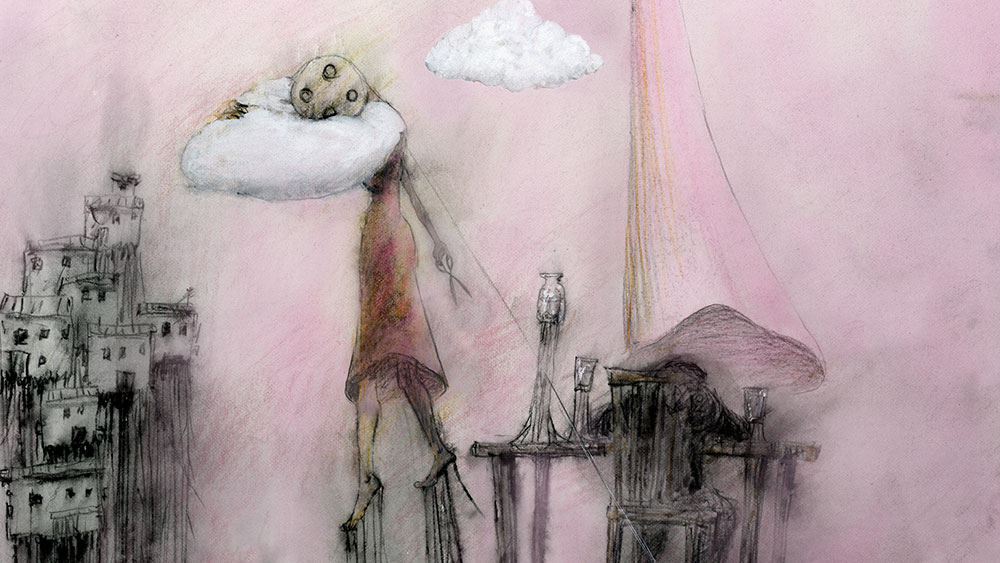
FUJITSU’s question concerned the depiction of “hanging in midair,” which is often seen in the works. YAMAMURA spoke about this “suspension” as follows. “The cover serialization of Bungakukai magazine was created with the Great East Japan Earthquake of 2011 and the Fukushima Daiichi Nuclear Power Plant accident in mind. I had a real sense that people’s lives were cut off and suspended by the disasters, and I had a solid desire to depict that sense of anxiety and stagnation in my work.” The keyword “north” also has a geographical meaning that evokes the disaster. Yet at the same time, the plural form of “north,” which is found in the psyche of people around the world, was used to give the work a universal meaning.
On the other hand, as in YAMAMURA’s previous works, the film is filled with humor. YAMAMURA said that the humor is connected to the ridiculousness of what people do and the coldness of their eyes toward them.
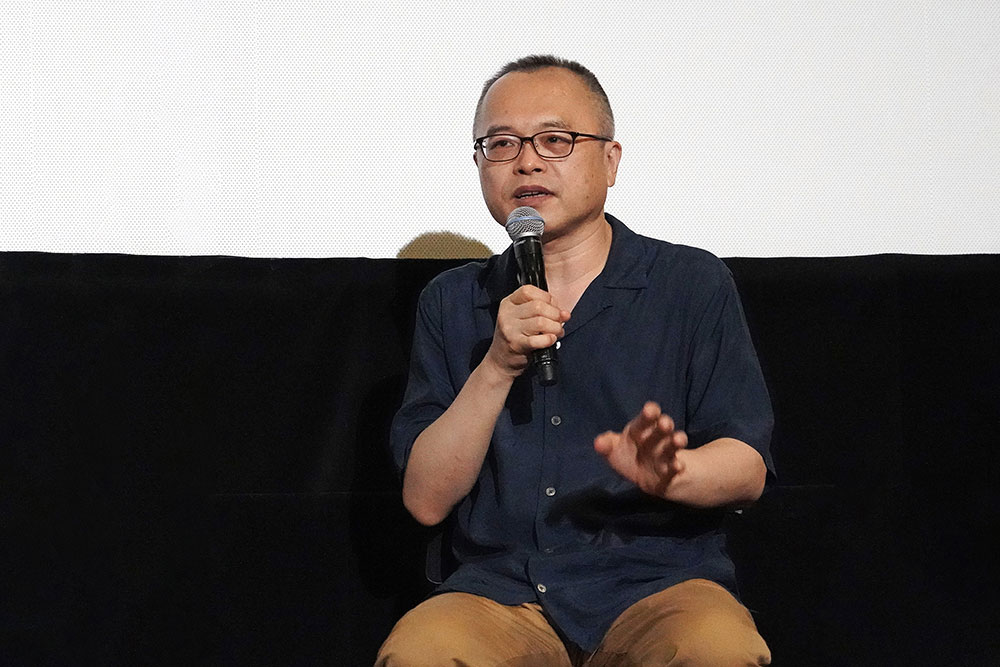
FUJITSU also pointed out that “texts” of YAMAMURA’s works “are written with a sense of warmth that does not let you easily be deceived by them.” YAMAMURA says he was influenced by the novelist Franz Kafka, and that he is attracted to phrases that make you stop and think for a moment. He responded, “Some of this work was inspired by phrases, and some by phrases as I was drawing pictures.” FUJITSU said that he senses YAMAMURA’s idea of asking the audience to be active in the words that make you want to search for connections. YAMAMURA, in turn, said that he hopes the images will be meaningful to each audience member by using words that are connected to feelings and emotions rather than logic.
When FUJITSU asked him about the structure of the work, YAMAMURA replied, “I decided on the ending of the story during the serialization, so there was less hesitation. But as for the beginning, I still don’t know if I got it right.” To those who have seen the work, he said, “It is a work that probably cannot be understood in one sitting, so I would be happy if you could see it again.”
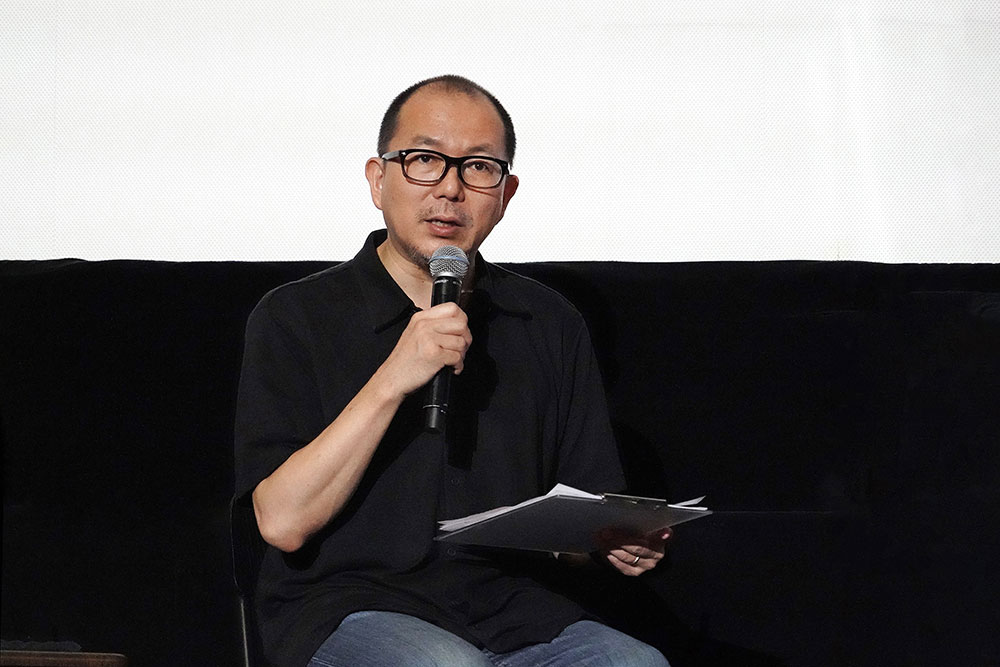
YAMAMURA is currently working on two feature films, two short films, and a VR film. He concluded his talk by saying that he hopes to release Dozens of Norths widely in some form in the future, and he asked the audience to look forward to it.
The second half of the session was an interview with Mahboobeh KALAEE. GONDO Shunji, one of the jurors for the Animation Division, commented on the award-winning The Fourth Wall as follows: “The work is full of visual stimulation resulting from a fusion of two- and three-dimensional images. The method of using a wall surface as a backdrop for 2D animation is not necessarily novel. However, how it was synchronized with fluid camerawork, which was probably produced with a hand-held camera, was very masterful. The liveliness maintained throughout the film, especially the movement of rotating motifs (the rotation of the camera itself and the laundry inside the washing machine), is impressive. It draws viewers into a dizzying visual experience.”
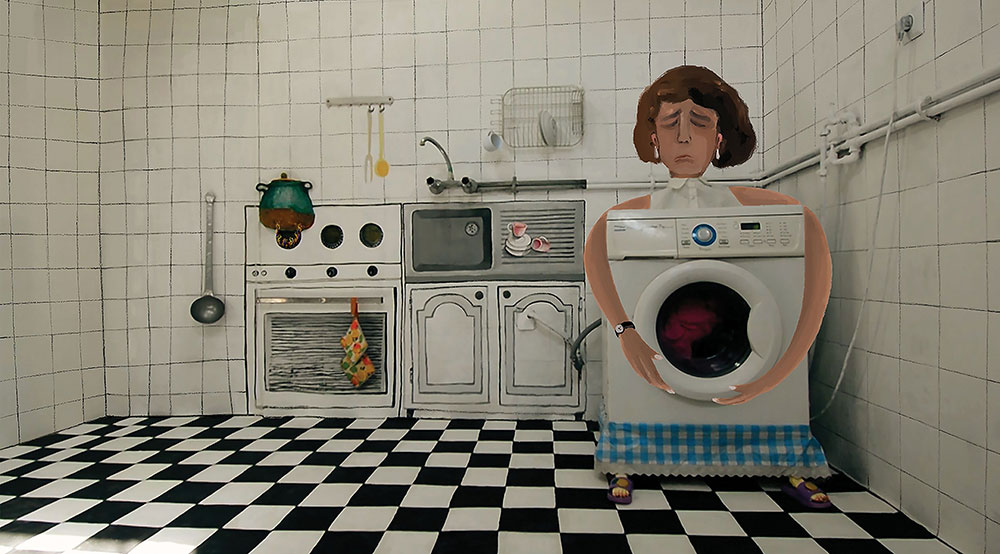
FUJITSU asked KALAEE about the title, The Fourth Wall. She explained she chose it based on the content of the work, in which four walls surrounding the boy in the story are the objects onto which the boy’s dream he is searching for is projected, and also her specific technique used in the work. In the film’s actual production, she struggled to balance the experimental technique and the narrative structure. “In the process of making the film, I made new discoveries and incorporated them into the film. While taking time-lapse shots with the camera, I tried out what looked interesting and decided on the cuts to be used,” she said.
KALAEE said that with a limited budget and equipment, she mobilized everything she owned, including her own body. The kitchen was chosen as the setting for the film because she did not have a studio, and she saw it as a place where she could use it as a stage. She chose the elements she would incorporate into the story, taking into account similarities between the role of the washing machine and that of the mother.
As for the boy, the main character, KALAEE says, “As I experimented with various technologies, I felt that these experiments would lead to a unique child’s eye view. I invited some children into the kitchen to talk with them and brainstorm about their unique perspectives. The boy’s feelings are projected on the front wall as seen from his own eyes, as he is positioned between his mother and father. All of the entities in the work are in the boy’s dream, and everything is in his imagination. I expressed a dream world where there are no barriers, no rules, and everything he likes is connected in any way he likes.”
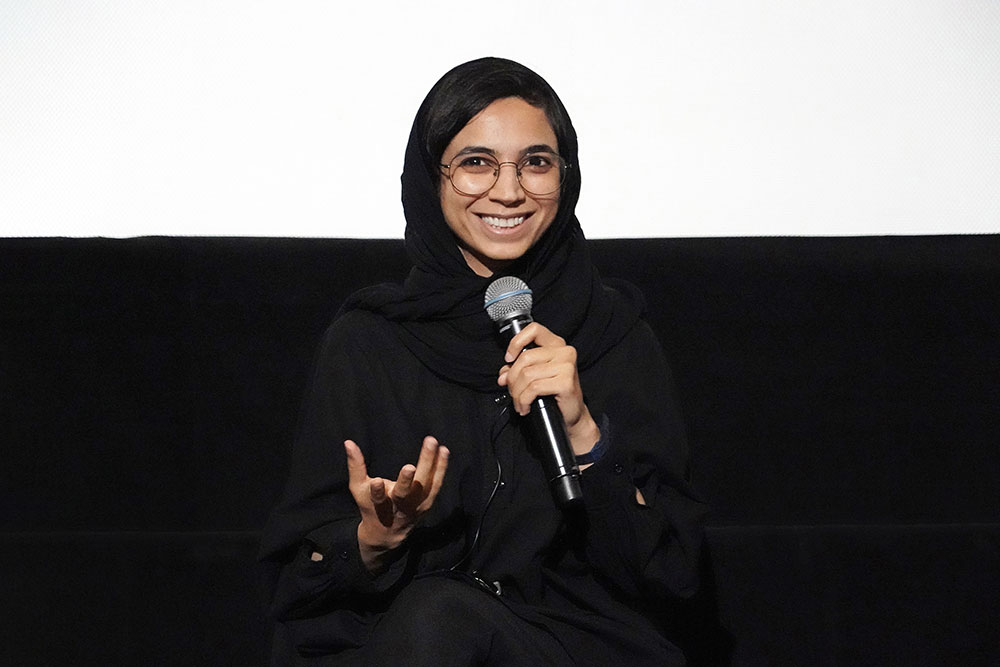
In the film’s shocking final scene, the set cracks open to reveal a real kitchen. KALAEE explains the aim behind the scene: “I had not decided what the final scene would be at the beginning. When I had finished 70% of the film, I decided that I should finally show the real kitchen. This is where I went through much trial and error in making the film. In this film, there is a world of imagination and a free world where the walls have tumbled down. But in the last scene, I became convinced that I should also show the real kitchen, which I had been experimenting with, as a third world.”
Her talk turned to the feature film that KALAEE is preparing for her next project. “I gained a lot of experience from completing the first film, and I would like to use that experience to make a feature film of about 90 minutes in length. I know it will be a challenge in terms of budget and time, but I want to take on the challenge. Writing down ideas for the future and reading them energizes me. At this point, I haven’t started production yet, but I’m really looking forward to it.”
In closing, KALAEE had the following message for the audience: “I look to my personal life, my own experiences, my own surroundings for ideas. If you are interested in making a film, this is my advice that you can just return to yourself. Everyone has a wonderful foundation within themselves for making artwork or everything to be created.”
YAMAMURA, one of Japan’s leading animation artists, and KALAEE, a rising star with her astonishing debut film, talked about their works, and the richness of animation could be felt in this talk session.
information
25th Japan Media Arts Festival
Animation Division Grand Prize-winning The Fourth Wall/ Excellence Award-winning Dozens of Norths Talk Session
Date: Saturday, September 17, 2022
Hours: 15:00–16:00 *Screening session for the two works was held from 13:30 to 14:45.
Venue: Ikebukuro HUMAX Cinemas
Speakers:
Mahboobeh KALAEE (Animation Filmmaker/Animation Division Grand Prize The Fourth Wall)
YAMAMURA Koji (Animation Artist/Picture-book Author/Animation Division Excellence Award Dozens of Norths)
FUJITSU Ryota (Anime critic/Animation Division jury)
Organizer: The 25th Japan Media Arts Festival Executive Committee
https://j-mediaarts.jp/en/
*Video of the talk session was provided later on the above official website (https://j-mediaarts.jp/en/festival/talk-session/) with English subtitles.
*URL links were confirmed on November 15, 2022.